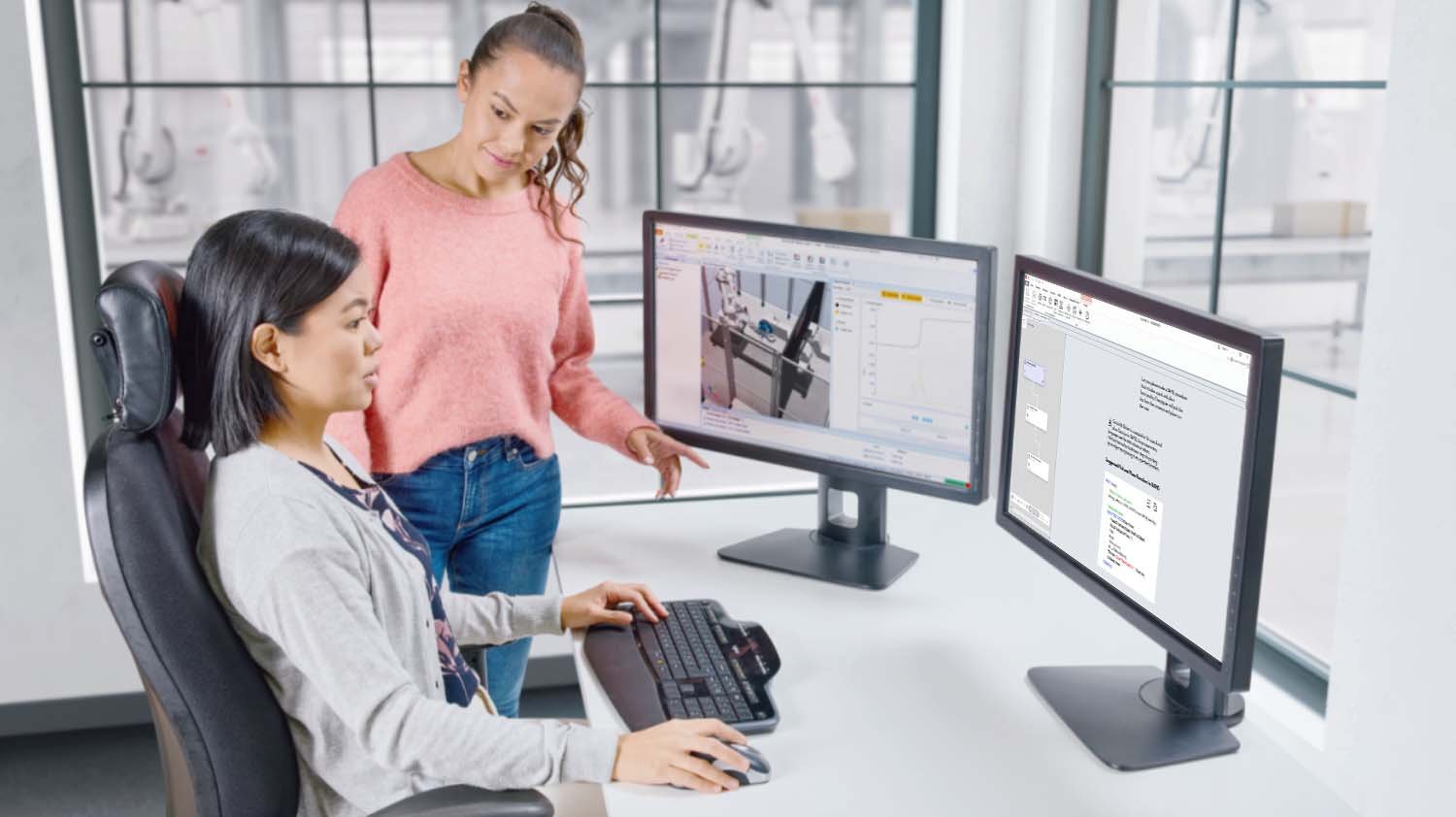• More intelligent and easy-to-use generative Al interface creates faster, easier commissioning and boosts productivity
• Another step in enhancing robot accessibility and versatility, beyond traditional manufacturing
ABB Robotics has enhanced its industry-leading RobotStudio® Suite with the new RobotStudio AI Assistant, harnessing the power of generative Al to make robot programming faster, easier, and more accessible.
“This is the latest step in our decade-long journey to innovate and commercialize AI, extending value for our customers by enhancing robot versatility and encouraging their use beyond traditional manufacturing,” said Marc Segura, President, ABB Robotics. “The demand for AI in robotics is driven by the need for greater flexibility; faster commissioning cycles and a shortage of the specialist skills traditionally needed to program and operate robots. RobotStudio is widely recognized for saving time and effort when it comes to programming and commissioning robots. By adding this generative AI Assistant, we are expanding its benefits to reach less experienced users and help experts solve technical challenges faster.”
Powered by a Large Language Model (LLM) that understands and interprets human language, RobotStudio AI Assistant draws from ABB’s comprehensive library of manuals and documentation to deliver high-quality, context-rich responses to questions, enabling users to set up faster and find rapid answers to questions and technical challenges.
By advancing the accessibility of RobotStudio, ABB is directly addressing the issues faced by smaller businesses and those in new sectors that have so far lacked the expertise needed to adopt robotic automation. Using the AI Assistant in RobotStudio’s cloud-hosted offline programming environment also provides an ideal training tool for developing these skills for students and early-career professionals.
RobotStudio is the world’s most widely used robot programming and simulation tool, enabling teams to collaborate in real time, across locations and devices. With features like automatic path planning, it also helps customers reduce energy use and waste while optimizing productivity, within their automated processes.
With the addition of its AI assistant, ABB is making it even more accessible, regardless of experience in robot programming.
Simpler, more intelligent human-machine interaction is also central to ABB Robotics’ vision for a new generation of Autonomous Versatile Robotics (AVR™).
“Enabled by the quantum leap forward in generative AI, we are driving innovation beyond a fixed world of operating procedures and coding, to one where robots can plan and execute a diverse range of tasks autonomously. We call this Autonomous Versatile Robotics; a new era of true versatility and independence,” added Segura.
RobotStudio AI Assistant is included at no additional cost with the RobotStudio premium subscription. Learn more and subscribe: https://www.abb.com/global/en/areas/robotics/downloads
ABB (ABBN: SIX Swiss Ex) ABB is a technology leader in electrification and automation, enabling a more sustainable and resource-efficient future. The company’s solutions connect engineering know-how and software to optimize how things are manufactured, moved, powered and operated. Building on more than 130 years of excellence, ABB’s ~105,000 employees are committed to driving innovations that accelerate industrial transformation.
ABB Robotics & Discrete Automation as one of the world’s leading robotics and machine automation suppliers, is the only company with a comprehensive and integrated portfolio covering robots, Autonomous Mobile Robots and machine automation solutions, designed and orchestrated by our value-creating software. We help companies of all sizes and sectors - from automotive to electronics and logistics – become more resilient, flexible and efficient. ABB Robotics & Discrete Automation supports customers in the transition towards the connected and collaborative factory of the future. The business area employs approximately 11,000 people at over 100 locations in approximately 53 countries.



